May 31, 2025 | 18:53 GMT +7
May 31, 2025 | 18:53 GMT +7
Hotline: 0913.378.918
May 31, 2025 | 18:53 GMT +7
Hotline: 0913.378.918
During my visits to Ha Giang, I always take the time to visit the mansion of the Vuong in Sa Phin. That relic, viewed from the top of the slope, is a complex of solid, superficial and majestic works, with old scaled tile roofs surrounded by hundred-year-old Cunninghamia forests.
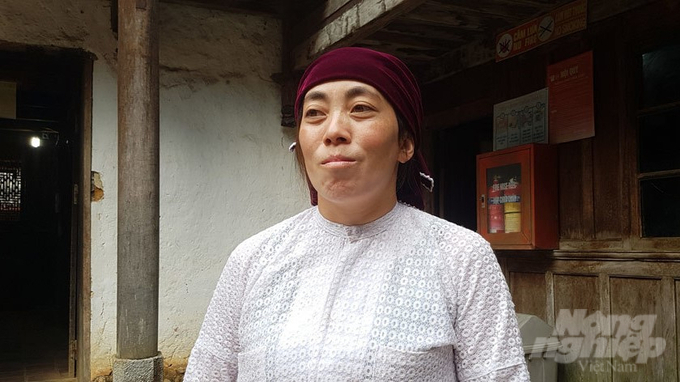
Vang Thi Cho, the fourth-generation granddaughter of Meo King Vuong Chi Sinh. Photo: Kien Trung.
The last time I met Vang Thi Cho was in 2019. At that time she was suffering from voice loss. For a tour guide, the voice was the most precious, irreplaceable thing. Cho’s voice became hoarse, and she was unable to say anything round and clear. After saying a few words, Cho had to stop and take a breather. Perhaps Cho had to experience immense anxiety and sadness back then.
“I thought it would only take about 1 or 2 months, but it took almost a year for me to speak again. After that, I quit being a tour guide and switch to managing the ticket counter of the relic. When the guests are crowded and the children can't take care of them all, I will help them,” Cho said.
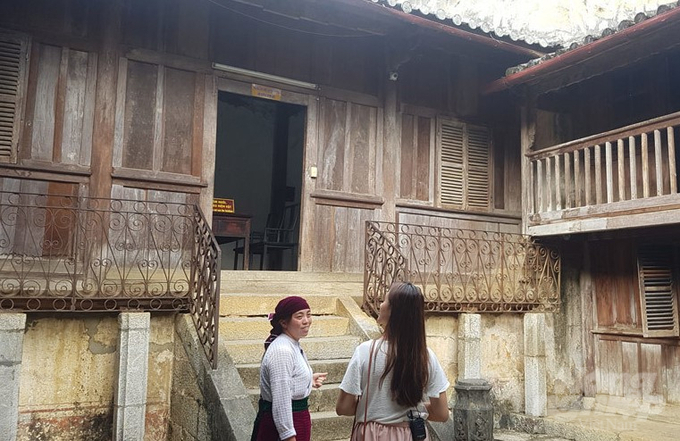
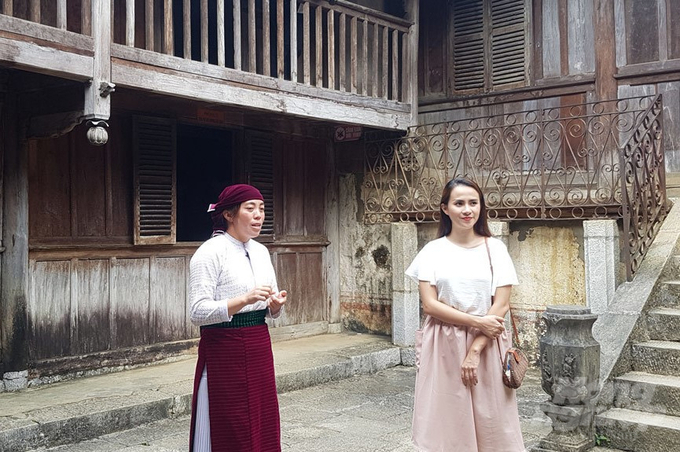
Cho introducing to visitors about the work built by her ancestors in Sa Phin more than 100 years ago. Photo: Kien Trung.
It was also during the time when the fifth generation descendant received training and gained enough knowledge to be a guide for this relic. But until now no one can replace Cho, no one can be like Cho, who has so much love for the ancestor’s proof of existence.
Cho’s mother was originally a poor Hmong girl in Dong Van who was taken as a wife by her father, then lived in the mansion of the Vuong. All 7 brothers and sisters of Cho were born and raised in the mansion. Cho's childhood was attached to the canopy of the Cunninghamia forest, familiar with every stone path, corn hole, and slope.
The relic of the Vuong began to welcome tourists to visit when Cho was young. There were times when guests came right at the time Meo King’s descendants were having dinner. With such an inconvenience, in 2004, the government advocated to move the families outside the mansion area, and the family completely handed over the relic to the cultural sector for management.
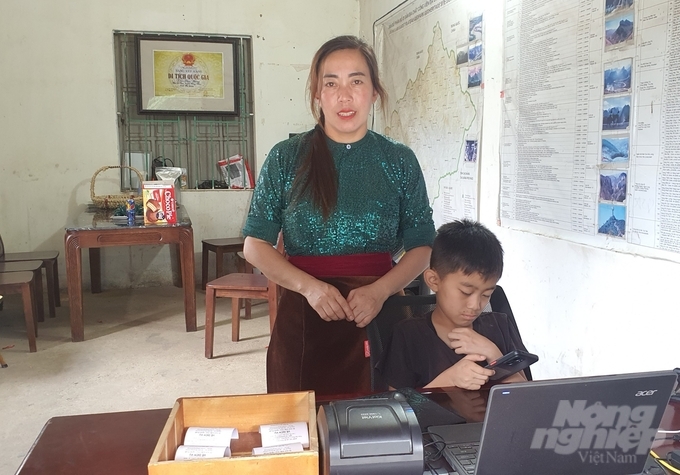
Cho stops working as a tour guide. She is now one of 22 members of the Vuong Relic Tourism Cooperative, selling tickets for visitors. Photo: Kien Trung.
After finishing grade 12, Cho also almost got married and had a common life like many other Hmong girls. But in 2007, Ha Giang opened an on-site training course to train guides for tourist attractions in the province. Cho joined the classes. At first she could not speak the language of Kinh fluently and was still shy and timid when communicating with strangers. But, there was an urge, however small, from within. Cho tried her best to overcome the hesitations, passionately learning about the mysterious and new things about the history and culture of the mansion with which her childhood was attached, new things about her fathers and ancestors which she never knew.
The course lasted 3 months, and that short amount of time completely changed the mind of the Hmong girl Vang Thi Cho. She is part of the mansion, a link in the family of Vuong Dat Dong Van.
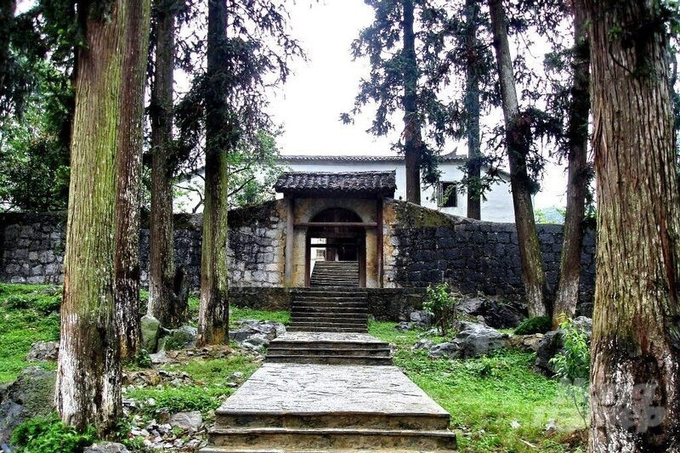
An ancient Cunninghamia row in front of the main gate of the relic of the Vuong. Photo: Kien Trung.
In 2019, the land use right certificate of the mansion of the Meo King returned to the hands of the Vuong’s descendants - the rightful heirs and co-owners of the relic. From 6 households (2004), now the descendants of Vuong Chi Sinh have grown to 22 households in Lung Phin.
In 2021, the Vuong Relic Tourism Cooperative was established, consisting of 22 members representing 22 families of descendants of the Vuong in Sa Phin. “There are nearly a dozen members participating in regular activities at the relic site. The cooperative's revenue comes from ticket sales to visitors. Every month, the cooperative deducts a portion to pay salaries to employees, contribute to obligations to the state, and the remaining part is saved for restoration and preservation of the relic," said Cho.
The ups and downs of the Vuong family in Dong Van are finally in the history books. Being the witnesses and what are still visible for people to worship and admire, the artifacts that have survived to this day. Going beyond the property of the family, beyond the scope of Sa Phin, Lung Phin, and the rocky plateau, the heritage is the symbol of the entire Dong Van global geopark area, recognized by the world.
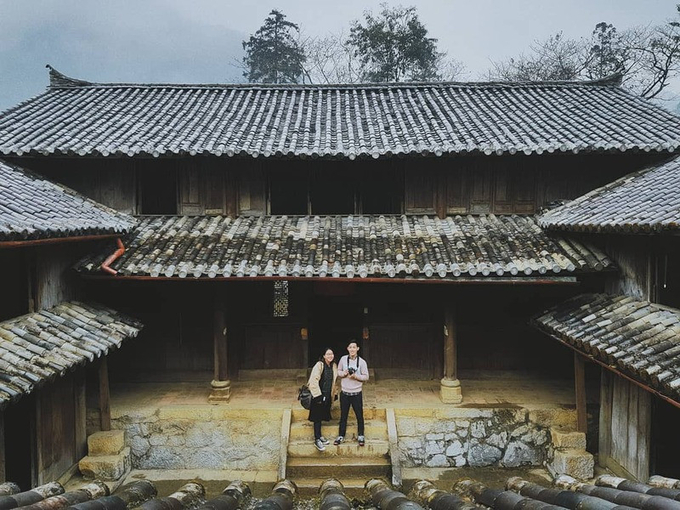
The hints of old age from the relic of the Vuong.
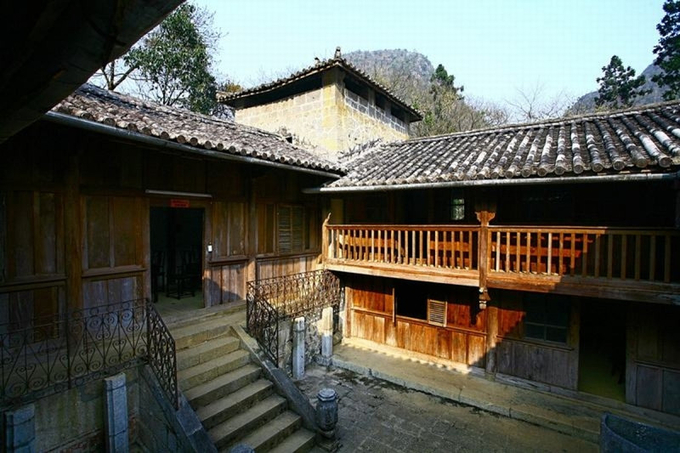
Skylight and inside the relic site.
When coming to the rocky plateau, those who are observant can notice that the cultural management agency in recent years has moved artifacts related to the opium set - things associated with the life of the mansion’s owner (Vuong Chi Sinh and Vuong Chinh Duc, father and son). This also happens to the heartbreak grass - the deadly plant of the mountains, previously planted at the stop of Quang Ba, the gateway to Dong Van rock plataeu.
Both of which I just mentioned have been removed. The people here think that letting people see those things means stimulating something bad, people will pick heartbreak grass to commit suicide, or learn to befriend the ‘brown fairies”.

Panoramic view of the relic of the Vuong Dynasty from above, surrounded by a hundred-year-old ancient Cunninghamia forest. Photo: KT.
The architecture of the mansion is a combination of three cultures of China, France and Hmong, but the Hmong culture is still the dominant culture in the Vuong family's mansion. Overall, the mansion has 4 horizontal houses, 6 vertical houses, divided into 3 areas: front palace, middle palace and rear palace with 64 small rooms arranged on 2 floors. Because the mansion was built entirely by human hands, having no intervention of machines, in order to ensure its solidity, the builders used green stone to help the mansion stand firmly under the historical timeline.
Translated by Samuel Pham
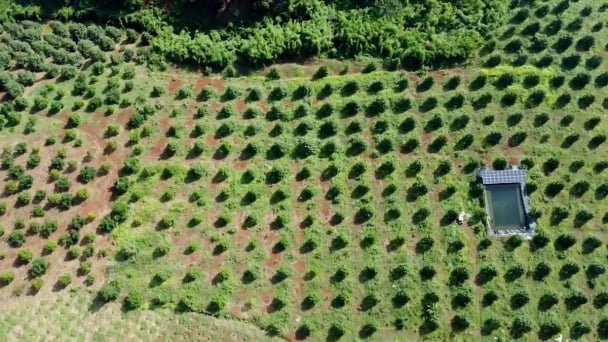
(VAN) Several scientists and farmers are experimenting with soil treatment in some key durian-growing regions such as Cai Lay (Tien Giang), Dak Song, Gia Nghia, and Dak R’lap (Dak Nong).
/2025/05/25/4127-3-073637_820.jpg)
(VAN) Thanks to the promotion from an FAO-implemented project, vegetable production in greenhouses in Moc Chau has seen strong development, from 1.5 hectares in 2021 to nearly 50 hectares in 2024.

(VAN) FAO has recently supported USD 140,000 to implement the project 'Risk mitigation human-animal interface risks through disease control initiatives in pig farming.'

(VAN) The People's Committee of Tra Vinh province has approved an adjustment to the investment policy for the Green Hydrogen Plant project, increasing its area to approximately 52.76 hectares.
![Reducing emissions from rice fields: [2] Farmers’ commitment to the soil](https://t.ex-cdn.com/nongnghiepmoitruong.vn/608w/files/news/2025/05/05/dsc08881jpg-nongnghiep-140632.jpg)
(VAN) Clean rice cultivation model in Thuong Tan commune, Bac Tan Uyen district, is assisting local residents in achieving sustainable agriculture by substantially reducing costs, increasing productivity, and protecting the environment.

(VAN) At the conference to disseminate Resolution No. 68, AgriS introduced its digital agricultural ecosystem and reaffirmed its commitment to accompanying the Government in promoting private sector development and sustainable agriculture.

(VAN) 'Blue Ocean - Blue Foods' initiative is designed to restore marine ecosystems and establish sustainable livelihoods for local communities by cultivating a minimum of 1,000 hectares of cottonii seaweed in the first three years.